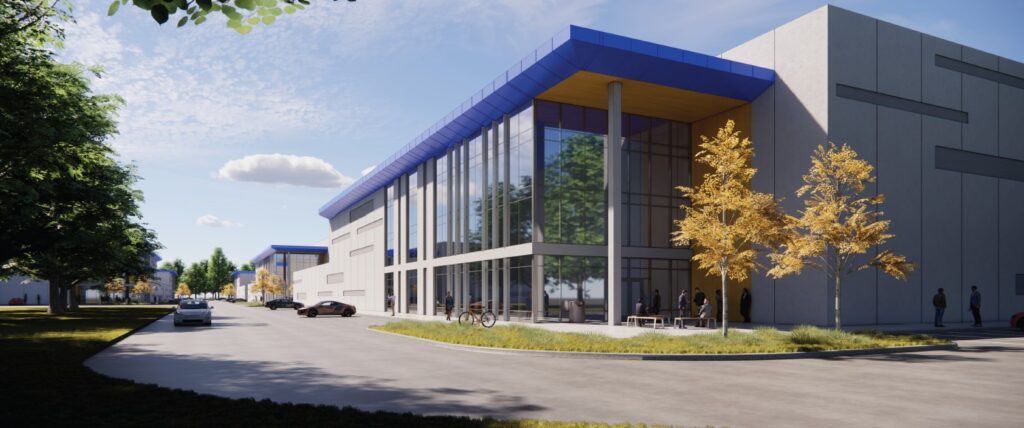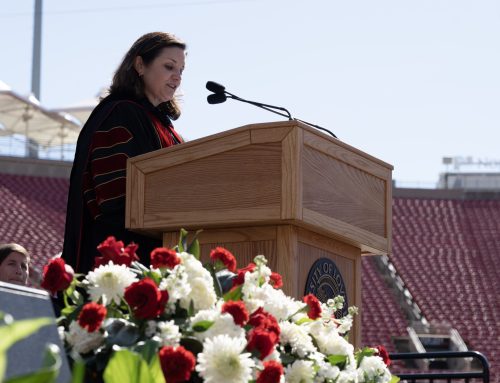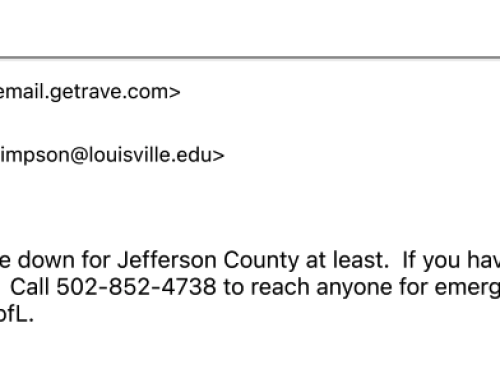By Brennan Allen
Made possible through a collaboration between PowerHouse Data Centers, one of the world’s largest data center developers and POE Companies, Louisville now has its first hyperscale data center underway.
“Hyperscale” refers to a massive data center capable of supporting large-scale storage, computing and cloud services through thousands of in-house servers. These facilities are essential for attracting big names like Amazon, Microsoft, Meta and Apple to the city, because they can handle enormous workloads. Hyperscale centers are the backbone of our digital world, enabling technologies such as artificial intelligence and cloud computing.
Located in the Southwestern part of the city, the center will feature between five to eight buildings along Campground Road. The data center’s campus will occupy around 150 acres of land, about the size of both Disneyland parks in California combined.
At full capacity, the data centers campus will need 402 megawatts of power to operate, equivalent to the annual usage of 280,000 residential customers. Its initial power capacity will be 355 MW, with the first 130 MW expected to come online in October 2026.
A facility of this scale demands two key resources: water and power. According to the co-founder and CEO of PowerHouse Doug Fleit, Louisville offers both abundances.
“Louisville offers everything hyperscale users need – immediate and reliable power at very attractive rates, water, connectivity, and a business environment that encourages more hyperscale growth in the region,” said Fleit during a press release.
The new center sits less than a mile away from the Ohio River and benefits from having access to the Louisville Water Company’s robust infrastructure. LG&E plans to build an onsite substation and a new switch station to help manage and protect the distribution of electricity.
Legislators want to join the race in the growing data center industry by presenting Kentucky as the perfect spot for new projects. House Bill 8, passed back in 2024, offered tax cuts to projects with an investment over a certain amount. The exemptions cover qualifying data center equipment, such as cooling systems, computer servers and energy.
A data center of this size is expected to bring significant economic benefits to the Louisville Area, creating short-term construction jobs, long term tech positions, and nearly 70 million in tax revenue to be given back to our public schools, metro government, and other community needs.
While the project promises economic growth, some community members have voiced concerns about the environmental impact and the potential strain on utilities and health implications for nearby residents.
Louisville Action Climate Network, a local organization advocating for equitable and sustainable energy use, has expressed apprehension about the development.
“Communities around the United States and in other countries have faced unexpected and previously undisclosed consequences resulting from the development of large data centers,” said LCAN board member Ken Shapero, who also serves as the organization’s policy and research director.
He cited several negative economic and health-related impacts of the developments; namely, higher energy costs, along with increased noise and pollution were of concern.
“All of these impacts could affect Kentuckians,” said Shapero. “That is why the Louisville Metro Council is currently studying and seeking public input for new rules and regulations that they could apply to the development of data centers prior to granting developers approval to build them here.”
David Hein, PhD., who serves as Professor and Chair of the Department of Pharmacology and Toxicology at the University of Louisville, acknowledges the potential benefits of data centers but warns of their environmental and public health costs.
“Hyperscale data centers like the one proposed in Louisville will have thousands of servers that will get extremely hot. Those servers will need to be cooled, sometimes with water, sometimes with air conditioning units, sometimes with both,” said Hein.
He says these solutions would use large amounts of energy while increasing air and water pollution.
“If you live close to the data center, you could have increased noise from the air conditioning units. There are a lot of fans there. And when the diesel generators crank up, that causes more noise, and there often is a lot of light generated close to the data centers. That, plus the noise, can lead to sleep disturbances for people living nearby,” he said.
The predominantly Black communities near the proposed site, an area historically known as Rubbertown, have long faced environmental and health inequities. Once a vibrant West End neighborhood, Rubbertown became heavily industrialized during World War II and was once considered one of the most polluted areas in the United States.
According to the 2024 State of Black Louisville Report, the chemicals released from Rubbertown are associated with respiratory, cardiovascular, and nervous system issues, as well as cancer, developmental disorders, and reproductive health concerns.
While Louisville’s new hyperscale data center offers opportunities for job creation and revenue growth, it also raises pressing questions about sustainability, equity and long-term community impact. Community input meetings are still being held on the restrictions and future of data centers in Louisville.
The first 130 megawatts of power are expected to be available by late next year.






